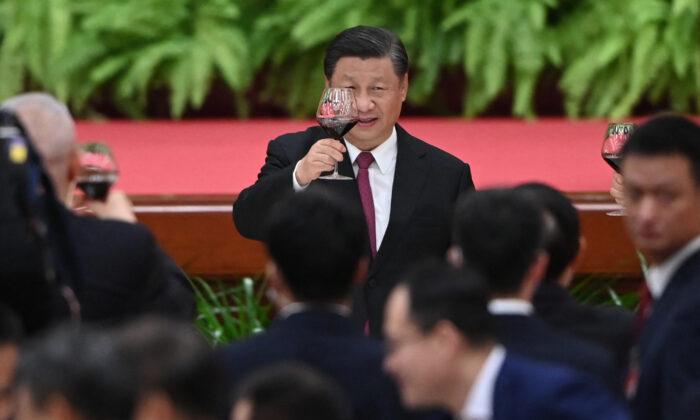You wouldn’t think that a strategy game would be created to improve moral character, but according to Chinese legends, that is how Weiqi, more commonly known to the West by its Japanese name Go, came to be.
There are many tales about the origin of Go. One version says the board game was originally used by the legendary Emperor Yao to teach his son Danzhu moral principles.
The object of Go, the Chinese name of which means “encirclement chess,” is to take and fill in space on the 19 by 19 board in a way that preserves the integrity of one’s own formations while encircling the other player’s pieces.
The game has only one kind of piece, called stones, which are divided into white and black to distinguish between the two players. This deceptive simplicity belies the virtually endless number of possible Go matches, as well as the subtle machinations which can snatch victory from the jaws of defeat in even the most unlikely of situations.

Go is one of the four great arts of ancient China—the others are calligraphy, painting, and mastery of traditional instruments. Perhaps because of its depth, Go was traditionally associated with celestial phenomena, military strategy, management of state affairs, and even divination.
Patience and Character
As a youth, legend says, Emperor Yao’s son Danzhu was lacking in character, so his father sought help from divine beings. On the bank of the Fen River, he saw two immortals sitting across from each other under a green juniper. They drew grid lines in the sand and placed black and white pieces along the grid in a battle array.
The emperor approached them and asked how he could improve his son’s behavior. One immortal said, “Danzhu is good in competition but is foolhardy. Take what he is good at and develop his character that way.”
One immortal pointed at the sand lines and stones. “This is a Go board,” he said. “The board is square and static, while the pieces are round and in motion. It follows the pattern of heaven and earth. From the time when we invented this game, nobody has truly mastered it.”
Upon the emperor’s return, Danzhu took up Go and made rapid progress. The ancients invented Go not for the sake of winning or losing, but for nurturing character, cultivating morality and temperament, growing wisdom, and expressing one’s artistic talent.

A mystical atmosphere surrounds Go, and it is the subject of the Chinese saying “a day in heaven is equivalent to a thousand years on earth.” The legend behind this phrase is that of a woodcutter who, lost in the woods, chances upon a pair of immortals playing a game of Go. Given a heavenly fruit by one of their servants, he observes their match for hours, until the servant reminds him that it is time to return home.
Reaching to pick up his axe, he discovers that it has long rotted away, and returning to his hometown, finds himself in a different age.
Reflection of the Cosmos
A traditional Go board has 19 vertical and 19 horizontal lines, forming 361 points, said to symbolize the myriad celestial bodies. A single point in the center of the board, called the Tianyuan, symbolizes the center of the universe. The round, white and black pieces reflect the circular nature that ancient Chinese ascribed to Heaven, while the square positions they occupy represent earth.

Mastery of Go embodied the Chinese ideal of living life in accordance with fate. This sort of personal cultivation emphasizes obtaining things naturally rather than through brute force. This principle is reflected in the mechanics of Go: playing too aggressively risks encirclement, whereas the ability and patience to analyze the flow of the match is the way to victory.
Go’s simplicity is another element that meshes well with traditional Chinese philosophy.
The white and black colors reflect the traditional Daoist yin-yang duality. Though they are but two elements, the opposites coexist to produce “the myriad things.” In this way, a game of Go can be seen not only as a struggle between armies, but as the ceaseless interaction of complementary opposites found throughout life and the world.




